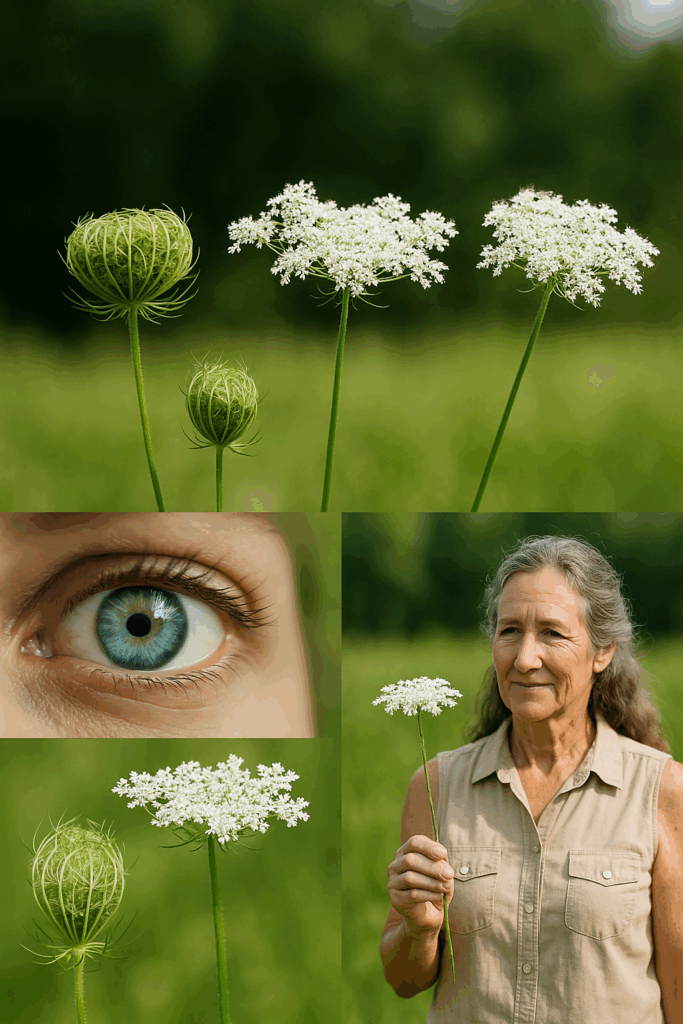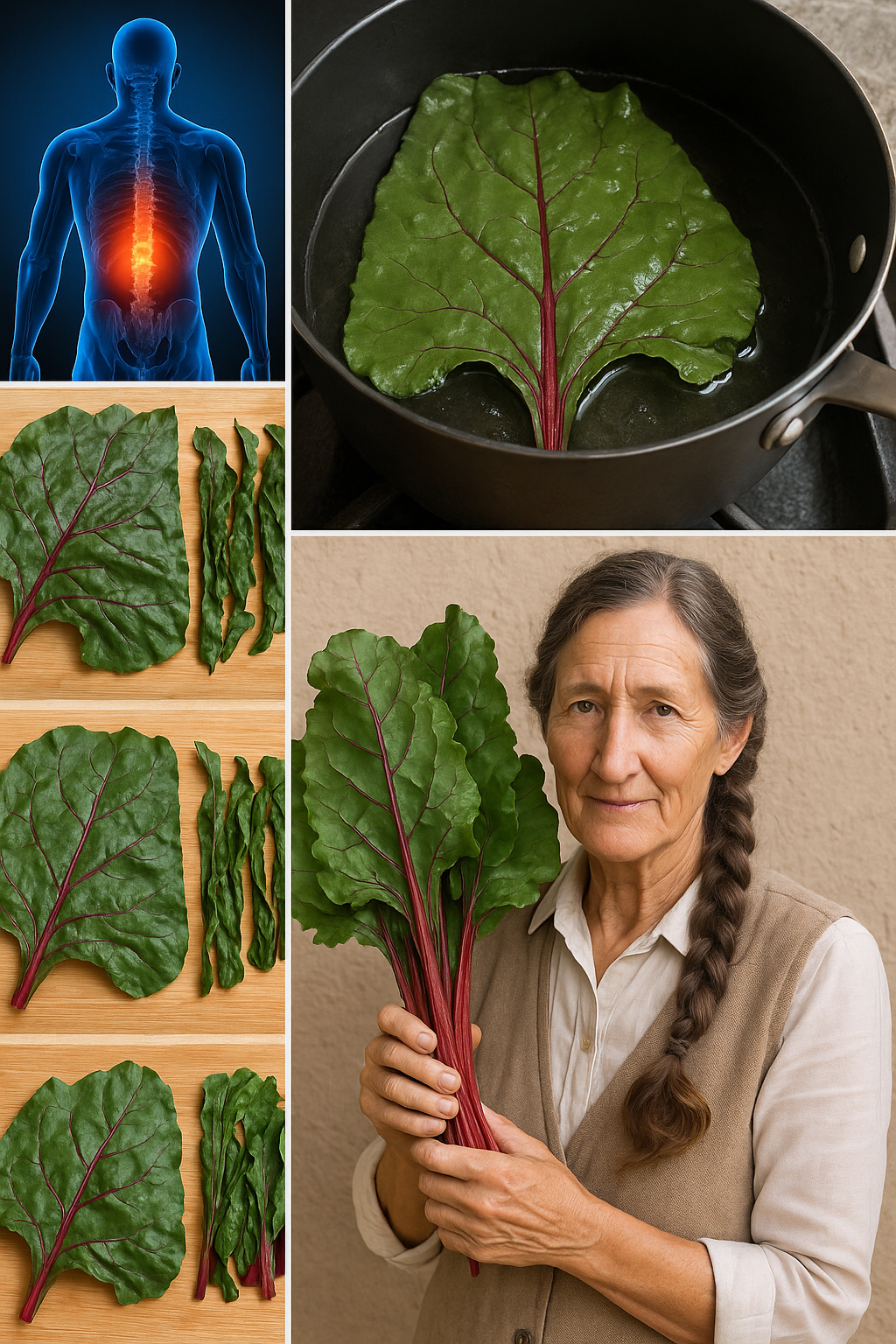It may look like a charming field flower, but Queen Anne’s Lace — also known as wild carrot — is much more than a pretty face. Beneath its intricate, lace-like blossoms lies a wealth of medicinal, cosmetic, and wellness benefits that traditional healers have tapped into for centuries.
From regulating menstrual cycles to relieving stress and enhancing digestion, this unassuming plant carries a natural pharmacy in its roots, seeds, and blooms. But it comes with one critical catch: it has toxic look-alikes. So if you’re thinking about harvesting it yourself, read to the end — your safety depends on it.

🪻 What is Queen Anne’s Lace?
Native to Europe and parts of Asia, Queen Anne’s Lace (Daucus carota) has naturalized around the world. You’ll often find it growing along roadsides, in open fields, and in sun-drenched meadows.
While its cultivated cousin — the common carrot — grows beneath the soil, wild carrot shares a very similar root system, albeit more fibrous. Its real magic lies not just in the root but in the flowers, seeds, and leaves, which have been used in everything from herbal teas to natural contraceptives.
🌿 30 Benefits of Queen Anne’s Lace
1. Rich in Antioxidants
Protects cells and reduces oxidative stress, helping slow aging and prevent damage.
2. Aids Digestion
Used to reduce bloating and ease stomach discomfort.
3. Natural Diuretic
Encourages urination to help flush out toxins and reduce water retention.
4. Supports Kidney Health
Used traditionally to prevent kidney stones and cleanse the kidneys.
5. Regulates Menstrual Cycles
Its seeds have been used to naturally balance hormones and stimulate menstruation.
6. Eases Respiratory Discomfort
Flower teas help calm coughs and sore throats.
7. Reduces Inflammation
Used topically to soothe swollen joints and irritated skin.
8. Enhances Skin Health
Infusions brighten the complexion and help manage acne and dullness.
9. Boosts Immunity
Rich in phytonutrients that strengthen the body’s defenses.
10. Natural Contraceptive (Historical Use)
Seeds were used in ancient times as a natural method of birth control — not recommended without expert supervision.
11. Accelerates Wound Healing
Poultices of crushed leaves can speed up skin recovery.
12. Supports Vision
Its link to the cultivated carrot hints at beta-carotene content, good for eye health.
13. Calms the Nervous System
Drinking Queen Anne’s Lace tea may help reduce stress and anxiety.
14. Detoxifies the Body
Supports liver and kidney detox functions.
15. Promotes Liver Function
Used in liver cleansing regimens to improve detoxification.
16. Soothes UTIs
Helps flush out bacteria and ease urinary discomfort.
17. Relieves Joint Pain
Anti-inflammatory compounds may reduce arthritis symptoms.
18. Settles an Upset Stomach
Effective against cramps, indigestion, and nausea.
19. Enhances Hair Strength
Infusions used as rinses may add shine and reduce scalp irritation.
20. Acts as a Natural Aphrodisiac
Historically associated with improved libido and energy.
21. Balances Blood Sugar
May help regulate glucose levels and reduce spikes.
22. Supports Heart Health
Contains heart-protective compounds that improve circulation.
23. Stimulates Appetite
Helpful for individuals recovering from illness or eating disorders.
24. Aids Sleep
Its calming effects help promote better rest when consumed as tea.
25. Lowers Fever
Used as a traditional remedy to bring down high body temperature.
26. Enhances Circulation
Improves blood flow and oxygen delivery to tissues.
27. Provides Natural Dye
Flowers and roots can be boiled to create soft fabric dyes.
28. Fights Acne
Topical use reduces swelling and bacterial buildup in pores.
29. Assists with Weight Management
Its diuretic nature helps reduce water weight.
30. Soothes Coughs
Floral teas offer relief for dry or irritated throats.
🍵 How to Use Queen Anne’s Lace
Tea:
Steep dried flowers or seeds in hot water for 5–10 minutes. Strain and sip warm. Excellent for digestion, stress, and urinary support.
Infused Oil:
Fill a jar with fresh Queen Anne’s Lace flowers and cover with carrier oil. Let infuse for 2–3 weeks, then strain. Use for skin hydration or massage.
Poultice:
Mash fresh leaves and apply to insect bites, wounds, or swollen joints.
Edible Root:
Young roots (first-year plants only) may be harvested, cleaned, and eaten like carrots. Best steamed or lightly boiled.
Natural Dye:
Boil flowers or roots in water and soak fabrics to create a pale, golden-yellow tint.

⚠️ Caution: Don’t Confuse It With These Dangerous Twins
Queen Anne’s Lace has toxic look-alikes, including poison hemlock (Conium maculatum) and water hemlock (Cicuta spp.), both of which can be deadly if ingested. Here’s how to tell them apart:
🟢 Queen Anne’s Lace
- Stem: Hairy
- Scent: Carrot-like
- Flower: White umbel with a central purple dot
- Habitat: Dry, sunny fields
🔴 Poison Hemlock
- Stem: Smooth, purple-spotted
- Scent: Musty or foul
- Flower: Similar shape, but no central red floret
- Habitat: Moist, shady areas
If you are not 100% certain, do not forage. Always consult with a local herbalist or wild plant expert.
🧬 Final Thoughts: A Lace of Beauty and Healing
Queen Anne’s Lace is a rare botanical blend of beauty, tradition, and medicinal power. Whether used in tea, oil, poultice, or culinary form, it holds untapped potential for supporting wellness — from hormones and digestion to skin and immunity.
But remember: with wild plants comes great responsibility. Never use it without confirming its identity. When used properly and safely, this graceful plant can become a valued ally in your herbal toolkit.
🌸 Sometimes the most delicate flowers hold the deepest strength — and Queen Anne’s Lace is proof.


